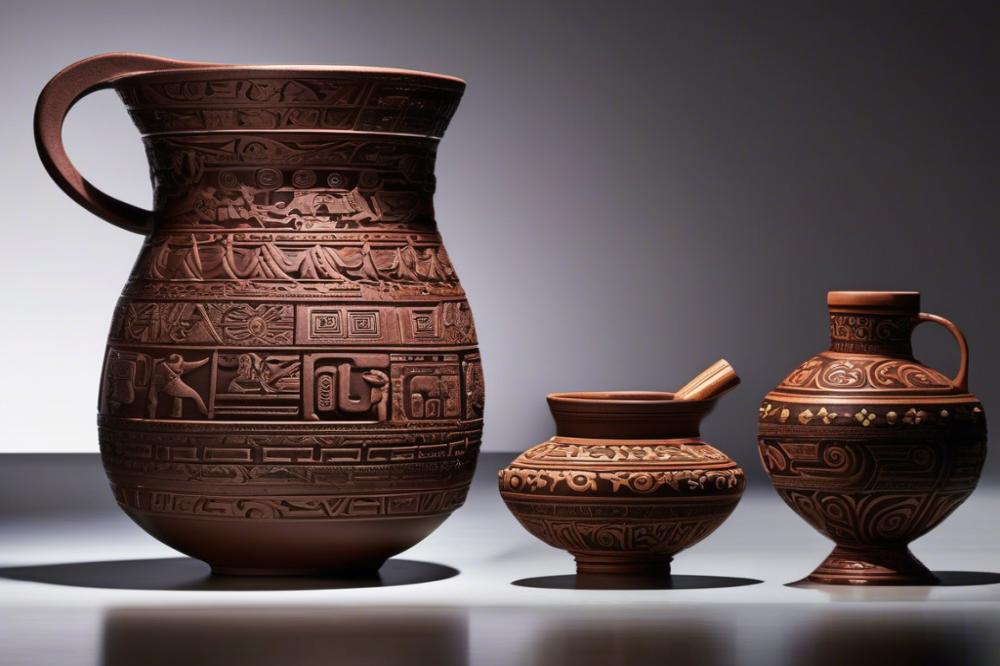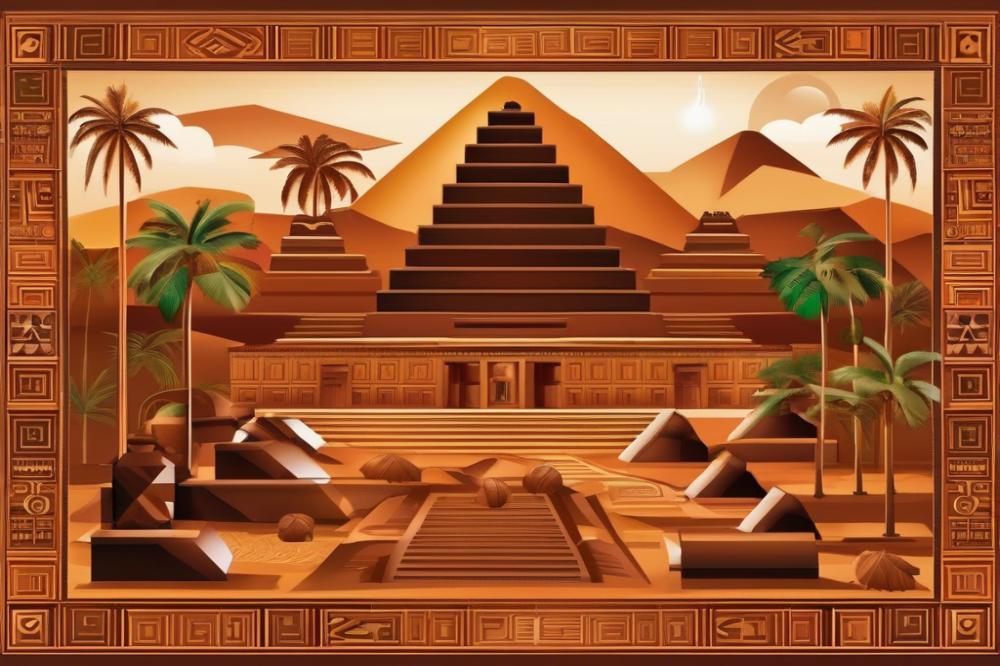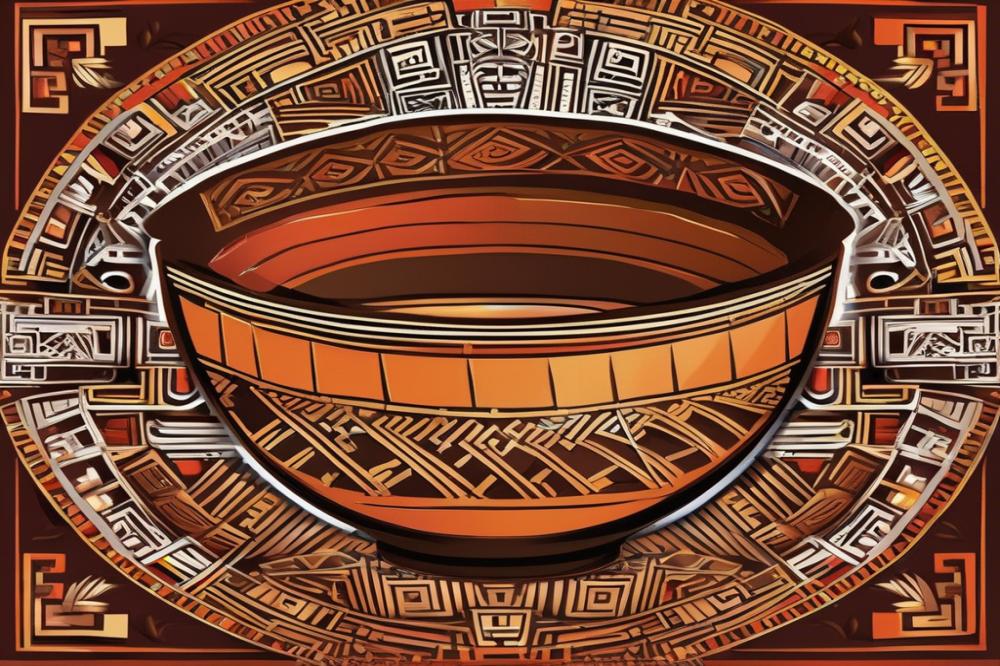Introduction
The journey of Chocolate Drinks spans centuries and cultures, evolving from ancient traditions into the delightful warm beverages we enjoy today. Considered much more than a mere treat, these drinks have held significant value throughout history. They showcase not only the versatility of cacao but also the human ability to innovate culinary delights.
Mexico and South America are crucial to understanding this evolution. These regions are where the cacao tree originated, and early civilizations such as the Aztecs and Mayans revered chocolate for its richness and stimulating properties. Xocolatl, a frothy and often bitter concoction made from cacao beans, was served during rituals and festivities. This ancient beverage laid the groundwork for the chocolate recipes we have today.
The transformation from Xocolatl to the modern sweetened versions reflects cultural shifts and advancements in chocolate processing techniques. With the passage of time, tastes and preferences changed, leading to a variety of styles. The warm, comforting embrace of Hot Chocolate is a testament to these transformations, showcasing how far we have come since those early days.
Understanding the history of chocolate helps us appreciate the cultural significance of these beverages. Each sip connects us to a rich legacy that began thousands of years ago. Today, Chocolate Drinks continue to be a cherished part of our culinary landscape, celebrated for their flavor and history.
Chocolate Drinks: The Origins of Xocolatl

Xocolatl is an ancient Mesoamerican drink made from cacao. The word itself translates to “bitter water,” a fitting description of its original taste. Historically, xocolatl was not the sweetened treat many enjoy today. Instead, it stood out as a thick, frothy beverage with a complex flavor profile.
In the cultures of the Maya and Aztecs, xocolatl held cultural significance beyond mere sustenance. It was often associated with rituals, ceremonies, and social gatherings. Some even believed it possessed mystical powers. Rituals surrounding this beverage frequently included offerings to deities. Leaders consumed it during important events, illustrating its status among the elite.
Various preparation methods showcased the importance of cacao in society. The beans were roasted, ground, and mixed with water, forming a mixture that required considerable effort to create. Different spices could be added, such as chili, vanilla, or even maize, enhancing its rich and robust character. These additions reflected local resources and individual preferences, creating a diverse range of ancient beverages.
Cacao itself played a crucial role in the economies of the Aztec and Maya peoples. It was used as currency and this made it valuable beyond just culinary purposes. Traders traveled great distances to obtain cacao beans, showcasing their importance in daily life. Through trade and cultural exchange, xocolatl spread across different regions, influencing future chocolate recipes and modern chocolate drinks.
As the beverage evolution continued, xocolatl remained a primary symbol of social status. It united people in various community settings and was shared among families. Each sip held a story, a taste of their history of chocolate and cultural legacy that lasted centuries. The careful processing of cacao laid the foundation for the myriad Hot Chocolate preparations that would eventually emerge.
The Transition from Ancient Beverages to Modern Chocolate Drinks

The journey of chocolate processing began long ago with the ancient peoples of Mesoamerica. They used cacao beans to create a drink called Xocolatl. This beverage was far from sweet; it had a bitter taste, often seasoned with spices like chili pepper and vanilla. Xocolatl was more than just a drink; it had deep cultural significance. It was consumed during rituals and special occasions, showcasing its importance in their society.
European colonization played a significant role in changing the landscape of chocolate consumption. When explorers returned to Europe with cacao beans, they introduced this exotic ingredient to a new audience. The way chocolate was viewed transformed dramatically. Initial reactions favored bitter drinks, but mixing cacao with sugar quickly won over many palates. Sugar, a luxury in Europe, enhanced the flavor, making it more appealing to the masses.
As tastes evolved, recipes began to change significantly. Sweetened chocolate recipes emerged, marking a shift from the original formulation. People started adding various ingredients, making the drink more enjoyable. By the 17th century, recipes that included sugar became popular in coffee houses across Europe. These establishments contributed to the beverage’s rise in popularity, turning it into a fashionable drink among the elite.
The introduction of milk was a game-changer. Combining chocolate with milk created a rich and creamy beverage that was different from the bitter original. It made chocolate drinks accessible to a broader audience. The warm beverages now tasted sweeter and richer, appealing to both adults and children. This transformation laid the groundwork for the hot chocolate we enjoy today.
Through these changes, we see a fascinating evolution of chocolate processing techniques unfold. Each step in history reflects society’s changing tastes and preferences. From the ancient, bitter Xocolatl to modern hot chocolate, the journey has been remarkable. Understanding this history gives depth to our appreciation of chocolate drinks today.
Cultural Significance of Chocolate in Mexico and South America
Chocolate holds a deep connection to the cultures of Mexico and South America. Historically, it was more than a treat; it was a ceremonial beverage called Xocolatl. This ancient drink, made from cacao beans, had rich flavors and sometimes included spices. It played an important role in rituals, often used in celebrations and religious ceremonies. The going ritual involved not just drinking but sharing this powerful beverage.
Cacao, the source of chocolate, also served as a form of currency. Ancient civilizations recognized its value, using cacao beans in trade. Communities treated cacao as social currency. A gift of cacao could symbolize friendship or respect. This importance highlights how chocolate was woven into society’s fabric. Its presence was a way to connect people across social classes.
Modern chocolate recipes still echo these past traditions. In various festivals, people prepare warm beverages to celebrate heritage. Special occasions often feature chocolate drinks, paying homage to ancient practices. Whether it’s Day of the Dead or weddings, chocolate plays a part in creating community ties. These celebrations show how the history of chocolate continues to resonate today.
As societies evolve, so do the rituals surrounding this beloved ingredient. The evolution of the chocolate beverage reflects changes in culture and technology. Historical processing methods have transformed into contemporary techniques. Today, chocolate drinks can be found in coffee shops worldwide, though they maintain their roots in ancient customs.
Understanding the significance of chocolate in these regions helps us appreciate its rich history. The unique journey from Xocolatl to modern beverages showcases cultural pride. Each sip connects people to their ancestry and shared experiences. The cultural significance of chocolate remains as potent as ever.
The Rise of Modern Chocolate Drinks
Contemporary chocolate beverages enjoy a way of life filled with indulgence and creativity. Hot chocolate stands out as a beloved choice. It often contains simple ingredients like cocoa powder, sugar, and milk. However, the recipe options have expanded to include a variety of flavors and toppings. Marshmallows, whipped cream, and spices are just a few ways to enhance this comforting drink.
Looking back, ancient beverages like Xocolatl tell a different story. The history of chocolate shows that these drinks were much more bitter. Made from ground cacao beans, Xocolatl was often flavored with chili and vanilla. This drink served a specific purpose, often becoming part of rituals and ceremonies, which is a stark contrast to drinking hot chocolate today.
Modern chocolate drinks showcase a wide range of recipes and ingredients. Craftsmanship has changed, moving from manual processing of cacao to modern techniques. Today, producers blend chocolate with various milks and sweeteners. Innovations lead to vegan options, sugar-free choices, and organic ingredients all gaining popularity. Each variation caters to different palates and dietary needs.
In Latin America, chocolate drinks differ significantly by region. In Mexico, you can find celebrated drinking chocolate, thick and frothy. Meanwhile, in Colombia, hot chocolate sometimes comes with cheese, creating a rich and savory experience. Each area has culture interwoven into its recipes, demonstrating the beverage’s cultural significance.
Warm beverages often bring comfort, especially during colder months. People turn to them not just for warmth but for emotional solace too. Enjoying a hot chocolate after a long day can evoke feelings of nostalgia and relaxation. It connects individuals to gatherings and shared moments. The evolution of these drinks reflects a broader trend in society, where flavors and experiences become intertwined with our emotional lives.
The Journey of Chocolate: From Xocolatl to Modern Indulgence
The evolution of chocolate drinks has traveled a fascinating path from the ancient Mesoamerican beverage known as xocolatl to the rich varieties we enjoy today. Early on, cacao was cherished not just for its flavor but also for its cultural significance. It served as a ceremonial drink, often associated with ritual and social gatherings. Over time, this unique beverage transformed dramatically. European colonization introduced new ingredients and methods, paving the way for sweeter, creamier versions that have become household staples.
Reflecting on the history of chocolate, it is clear that cacao has left an indelible mark on global culture. Different societies have adopted and adapted chocolate in ways that mirror their unique traditions and tastes. Hot chocolate is more than just a drink; it symbolizes comfort, joy, and celebration across diverse cultures. From the spiced varieties enjoyed in the Americas to the silky concoctions found in European cafés, chocolate drinks have evolved while still connecting us to their ancient roots.
This journey through time underscores the ongoing significance of chocolate in our lives. Each cup represents a blend of history, culture, and innovation. While the ingredients and preparations may have changed, the love for chocolate remains unwavering. Today’s hot chocolate is not just a treat, but a testament to humanity’s ongoing relationship with this beloved food.



